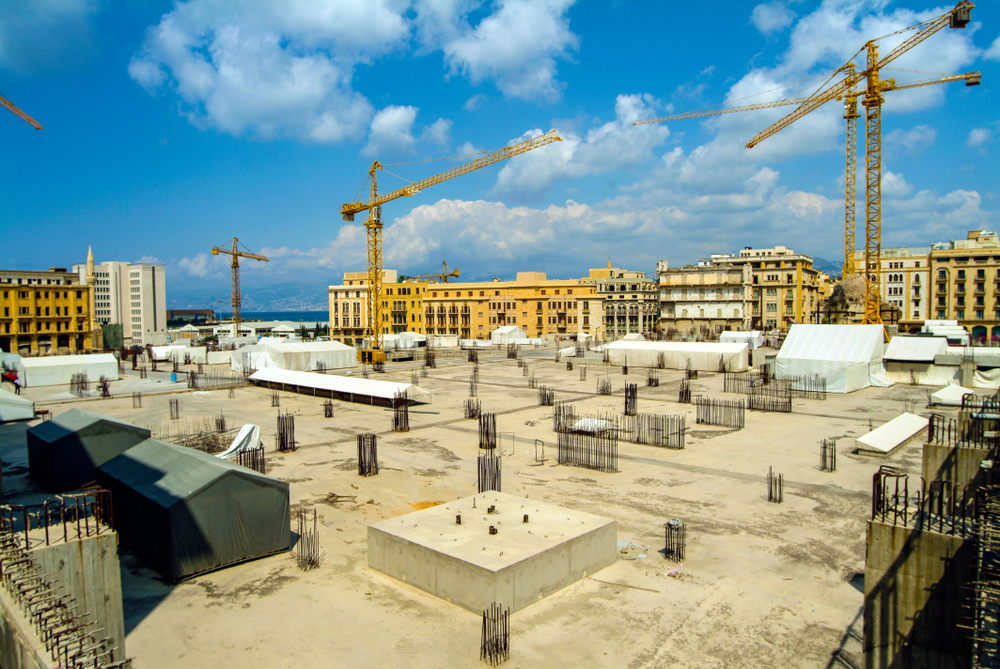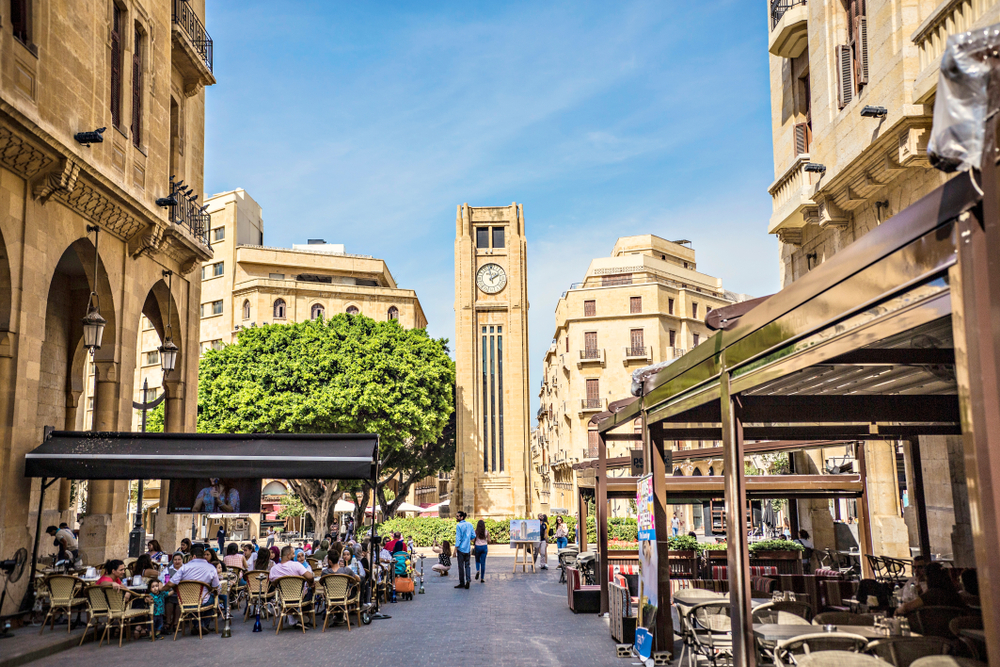Beirut is the posterchild for a divided city.[i] 15 years of fighting during Lebanon’s civil war (1975-1990) saw the capital city split by ethnic, religious, and physical lines. These divisions did not end with the war. Over three decades later, sectarianism, segregation, economic inequality, and violence are a lasting part of Beirut’s post-war legacy.
The physical reconstruction of the city centre in post-war Beirut is believed to have played a role in these enduring divisions. When the reconstruction process began, many Beirutis saw it as an opportunity for society to heal. The public domain could be remade and revived, and in this way a space for reconciliation would be built.

Solidere building site in Beirut. Credit: Shutterstock/David Dennis
Instead, the work, which was carried out by the private company Solidere, has been accused of promoting a culture of ‘amnesia’ around the civil war, as well as exacerbating socio-economic divisions. When Solidere rebuilt Downtown Beirut, they sought to remove all physical remnants of the war. In their place, a shiny new imagined centre was built.
But burying traces of war does not necessarily mean the past is buried too – and failing to create a unified space may be contributing to a divided society.

Nejmeh Square in Downtown Beirut. Credit: Shutterstock/Sun_Shine
Solidere’s reconstruction process, which began shortly after the war ended, seemed set on destroying all traces of recent history, and streets and buildings quickly fell prey to the bulldozers. By 1993, 80 per cent of structures in Downtown were damaged irreparably – yet only a third of this had been caused by the war itself.[ii]
For many, Solidere’s reconstruction of Downtown is the embodiment of the state’s policy of amnesia. The Taif Accord signed in 1989 to formally end the civil war proclaimed that there was ‘no victor and no vanquished’ in Lebanon. It suggested no mechanism for dealing with the legacy of fighting, nor did it mention victims. By circumventing the issue of responsibility, the state could begin to move forward. At the same time, it encouraged a culture of forgetting, leading to accusations of a state-sponsored amnesia in the country. One activist noted that ‘the downtown is the core of the reconstruction ideology — that we don’t need to look at the past’.[iii]
It’s been claimed that, for ‘communities of difference’ to be successful, there must be a ‘studied historical absentmindedness’.[iv] Given a general amnesty law in 1991, a broadcasting censorship law in 1994, and a law in 1995 enabling ‘the missing’ to be classified as ‘dead’, it seems unlikely that remembering the past would yield justice in the present. This ‘amnesia’ could therefore help to promote harmonious co-existence.[v] For some, forgetfulness is seen as ‘an antidote to future conflict’.[vi]
